British industry was one of the first to create the concept of an SPG, but did not have much success with these vehicles in WWII. Aside from Challenger and Avenger tank destroyers and Crusader AA SPAAGs the British did not have much to offer when it came to SPGs. There were only two others that saw battle: the Bishop and Archer. The latter actually turned out quite well, despite its unusual configuration.
German style tank destroyer
Attempts to build a tank destroyer have been made by the British since the 1930s. There was not much to choose from in terms of a chassis. The medium tank program was slipping and the light tanks did not have much room for the installation of a gun. One of the first light SPGs was built on the chassis of the exported Vickers Mk.E. Later tank destroyers were built on the chassis of export Vickers 4-ton tanks. Six Vickers-Carden-Loyd M1937 vehicles were also produced to fulfil a Latvian order.
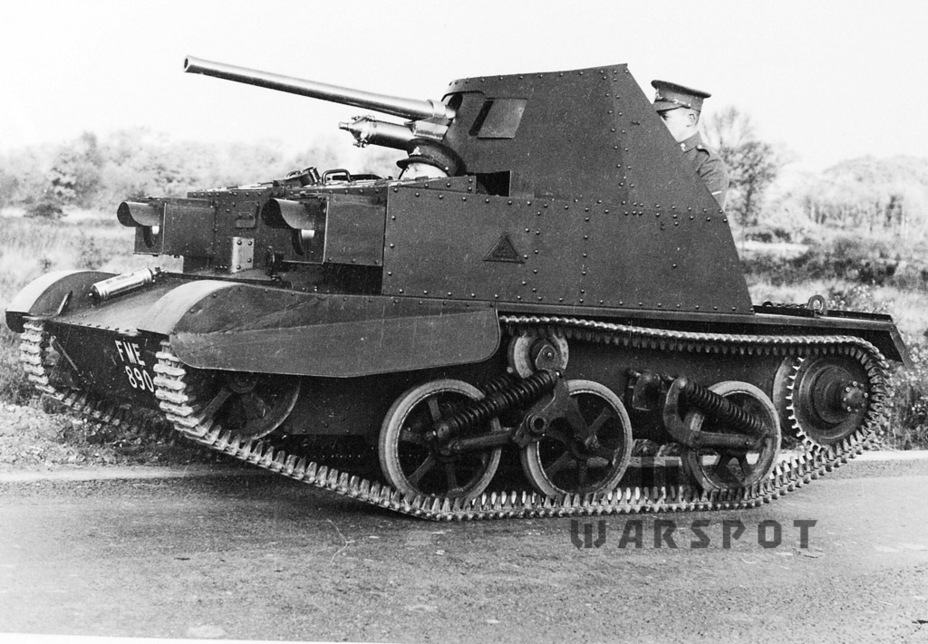
One drawback of SPGs built in this way was that the fighting compartment became very cramped. Even one person did not have enough room to operate the gun. The turret that formerly barely fit a machinegun now had a 2-pounder gun which had to be loaded and fired all while observing the battlefield. Meanwhile, light tanks in the British army had two-man turrets.
There were also attempts to install a 2-pounder gun into a Light Tank Mk.VI, but the result was the same. Even the enlarged turret was too cramped. The Light Tank Mk.VII armed with this gun was a much better option. The only acceptable solution was developed on the chassis of the Bren Carrier APC. An SPG armed with the same 2-pounder gun was built on its chassis. The resulting tank destroyer had a good layout and a low silhouette. A large shield covered the gun crew from one side.
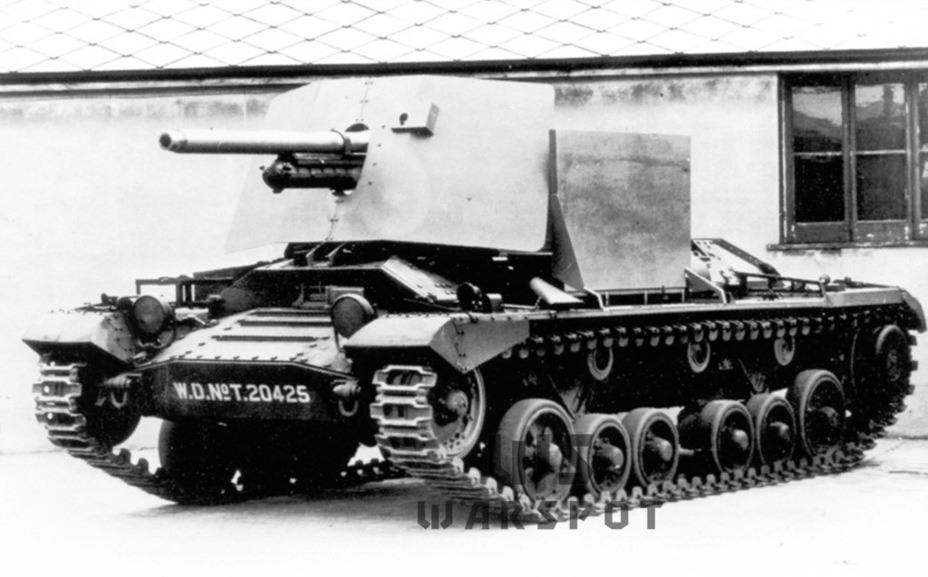
Work did not proceed past an experimental prototype. Similar SPGs were developed in Canada and Australia during WWII. Both were produced in large numbers but never saw battle, since by 1941-42 the 2-pounder gun was already quite weak. The Germans also converted captured Bren carriers to use their own anti-tank guns. By 1941 these vehicles were also insufficiently effective, but in 1940 they could have made a large difference in the Battle of France. Of course, history doesn't care for the word «if». The British army did not receive any SPGs in 1940 or 1941.
The situation changed only when the British encountered German tank destroyers in North Africa. The Panzerjager I was used effectively against British tanks. In practice they could defeat even thickly armoured vehicles like the Matilda. It's hard to say how much of an influence the German tank destroyer had on the British designers, but the designs that cropped up in 1942 were reminiscent of German vehicles.
The 2-pounder gun proved ineffective against modern German tanks. Light tanks were removed from production, and there was a notable shortage of cruiser tanks. The only available chassis for conversion was the Valentine.
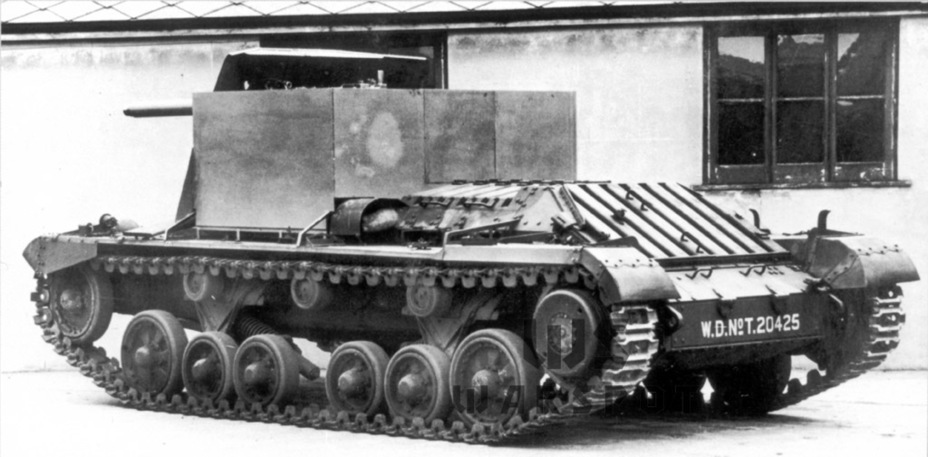
Metropolitan Cammell Carriage and Wagon Company (MCCW) received the task of building a prototype of a tank destroyer armed with a 6-pounder gun. The Valentine I tank with WD number T.20425 was chosen for conversion. The turret was removed from the tank. A special pedestal gun mount was installed in the front. The fighting compartment was protected from small arms fire from the rear and sides by armour plates.
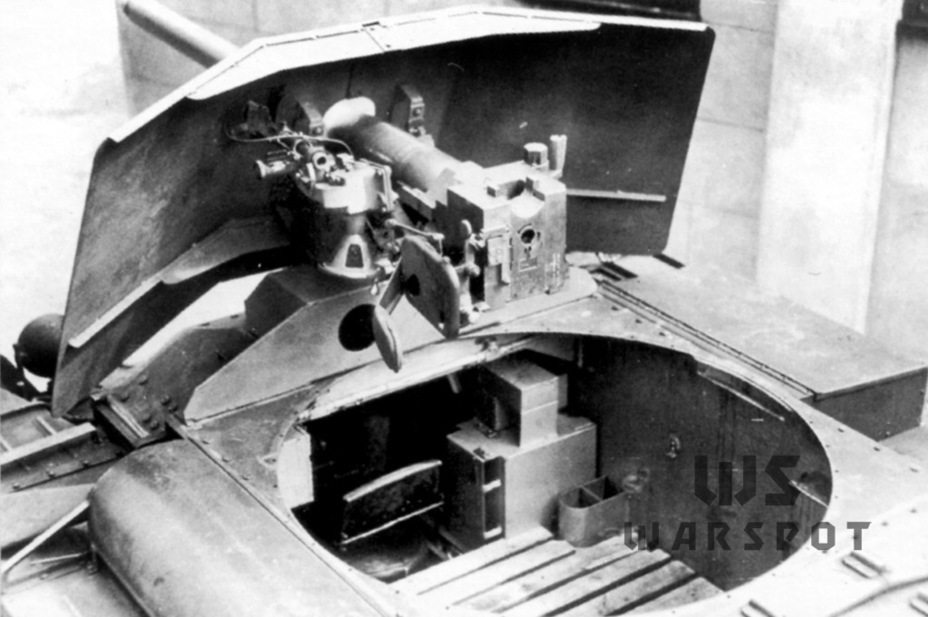
The tank destroyer was tested in 1942 but never put into production. The effectiveness of this design was less than that of equivalent German tank destroyers. The tank destroyer was taller than the Valentine and had weaker armour. The Valentine IX with the same gun was already in development and looked much more promising.
The Bishop became the first SPG to be built on the Valentine chassis. After that the British switched to building tank destroyers with more powerful armour such as the Churchill Gun Carrier. However, the Valentine was offered as the chassis of a tank destroyer again in 1942.
Gun backwards
By the fall of 1942 the most promising anti-tank weapon in the British arsenal was the 17-pounder (76 mm) gun. The gun had exceptional penetration but also exceptional mass and dimensions. One of the ways to compensate for these drawbacks was to mechanize the gun. Work on this task began on September 29th, 1942.
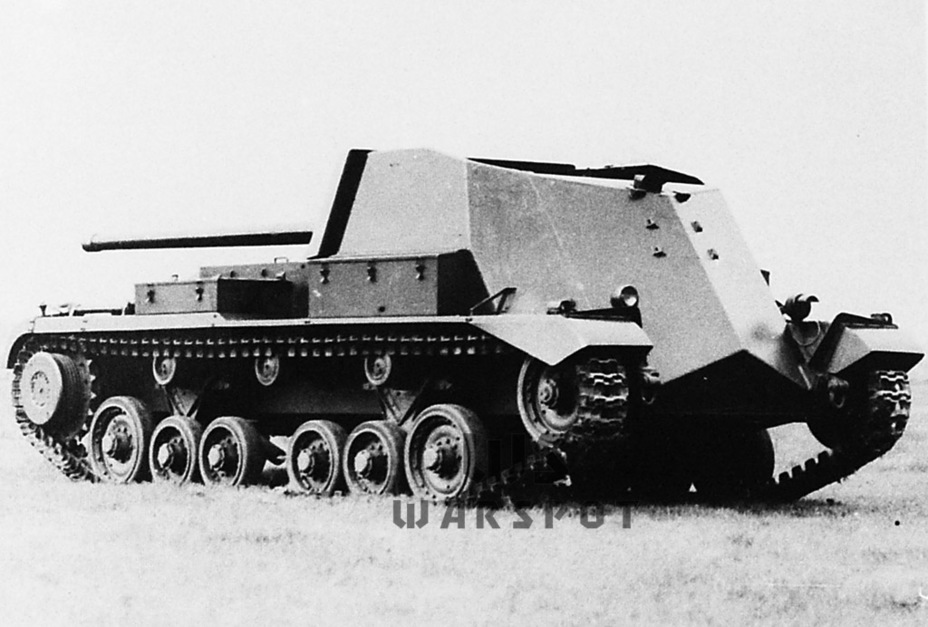
The Cromwell chassis was considered the highest priority for SPG development, which prompted the development of the Challenger tank destroyer. However, other tank destroyers proved more successful: the Sherman VC and IC and Achilles IC and IIC. The American chassis were no worse than the domestic ones, and it was only necessary to convert existing tanks rather than build vehicles from scratch. In addition, the Cromwell needed not only a new turret but an extended chassis to accept the 17-pounder gun.
Another candidate for 17-pounder installation was the Valentine. Compared to the aforementioned vehicles it might seem the poorest option. There was no way for the gun to fit into a rotating turret and the tank was too small for such a large gun.
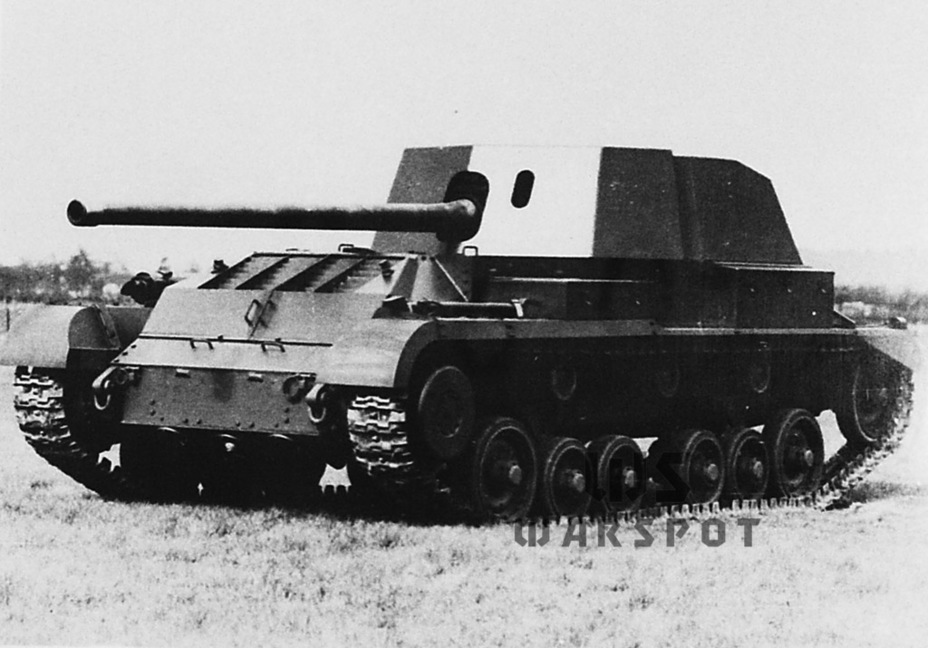
Vickers-Armstrongs was developing a replacement for the Valentine under the name Vanguard. Initially this vehicle was supposed to serve as an SPG chassis. However, development of the Vanguard hit a dead end. The last time the Vanguard was mentioned as a candidate for an SPG project was April of 1943. Vickers-Armstrongs received an order for the development of an SPG on the chassis of the old tank in early 1943. The official name given to this project was Valentine 17-pounder SP. The first vehicle was presented to British artillery command on May 24th, 1943.
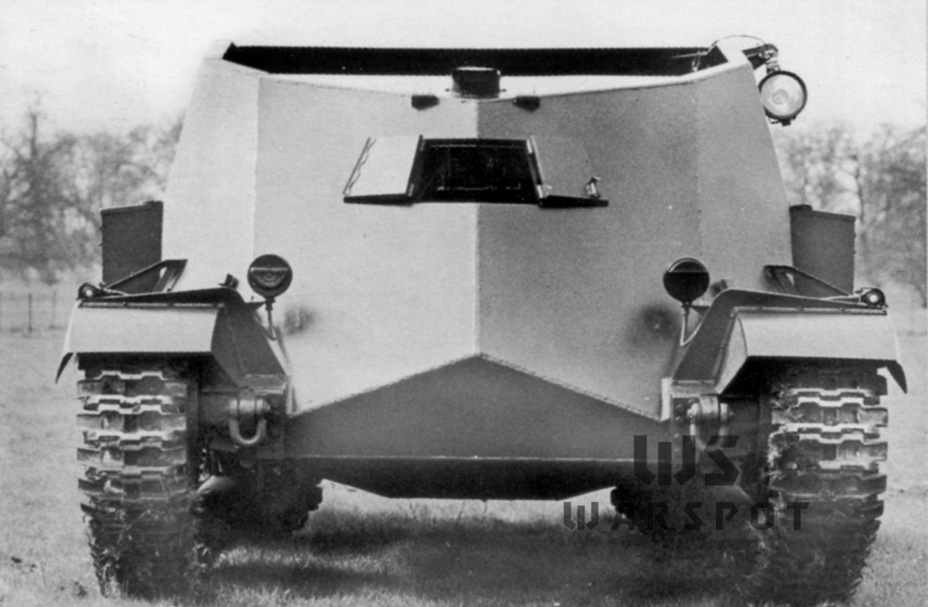
The difficult task resulted in several unconventional solutions. Even the Cromwell had to be lengthened for mounting the gun, but the Valentine was much shorter. Vickers-Armstrongs engineers led by Leslie Little had to discard the traditional SPG concept with a gun that pointed forward. The new SPG had a gun that pointed backwards.
This solution introduced many problems. For instance, the Valentine 17-pounder SP could not fire on the move. In that case the breech would go through the driver's head. The driver had to get out of his seat when the gun was firing. The tank also had to have its back to the enemy to engage them.
This layout had its advantages. The overhang of the gun was reduced, especially compared to other vehicles mounting the 17-pounder. This was also the lowest vehicle equipped with a 17-pounder gun. It was almost as low as a Soviet SU-76M.
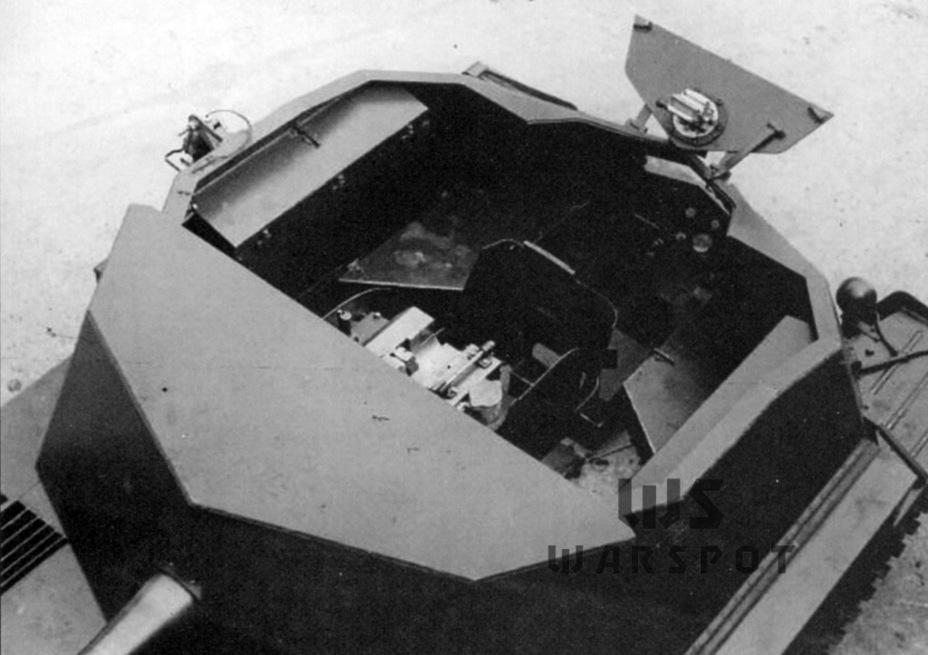
The change in layout was not the end. The hull of the Valentine 17-pounder SP was altered to make the most out of the chassis. The designers managed to make room for a fighting compartment that could fit 4 men, 39 rounds of ammunition for the gun, and 24 magazines (720 rounds) for the Bren gun.
The hull was different from the Valentine not just in shape, but in armour thickness. The tank destroyer's armour was only 20 mm all around. In some spots it was as thick as 25 mm, but this was done to improve rigidity rather than to make it more protected. Little and his team did not make this decision lightly. The Valentine's 60 mm of armour was not a guarantee of protection by 1943, and an SPG with the same armour would weigh 20 tons. The mobility that already left much to be desired would decrease further, and this was a very important feature of a tank destroyer.
Thanks to the reduced armour the Valentine 17-pounder SP weighed 15.2 tons. Supercharging the GM 6-71M engine to 192 hp also helped mobility. The power to weight ratio reached 12.6 hp/ton, which was not a bad result for that time.
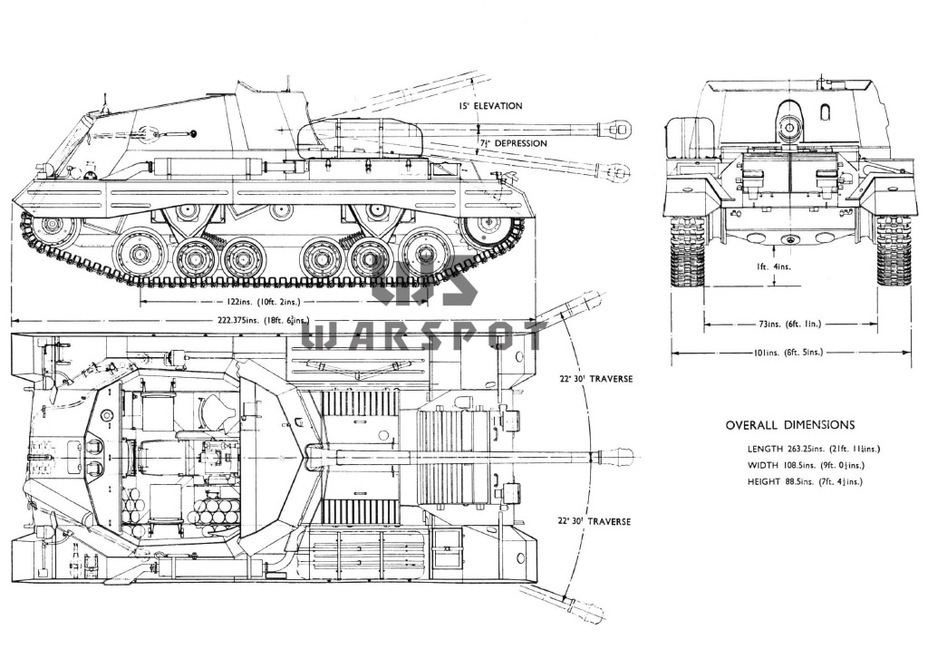
The results of brief trials that took place between May 24th and June 7th 1943 were mixed. The artillerymen wanted an SPG with a full turret and 10-15 degrees of gun depression. The Valentine 17-pounder SP did not meet those requirements. The maximum gun elevation was 15 degrees, depression was only 7.5 degrees. The gun traverse range was 45 degrees. The top speed was 33.5 kph: faster than the Valentine but slower than was desired. The military also did not like the cramped fighting compartment and the ammunition capacity, which was judged insufficient.
However, while the Challenger satisfied the army's requirements, it had a much greater gun overhang, larger dimensions, and did not carry that much more ammunition. Even the tank destroyers on American chassis did not fully meet the artillerymen's desires.
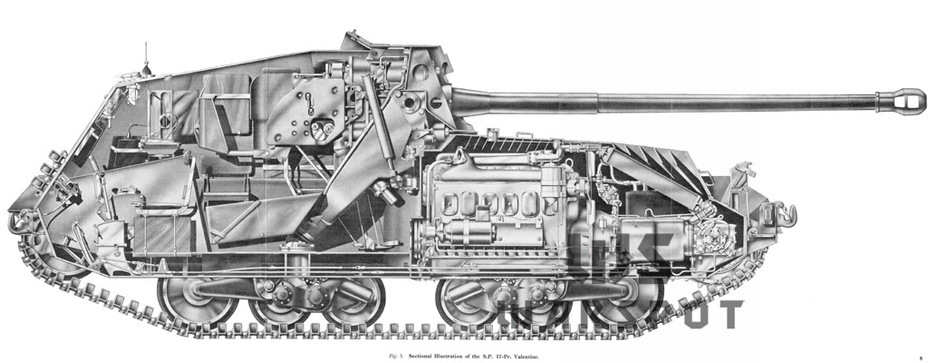
The Valentine 17-pounder SP was twice as light as the other tank destroyers that used the 17-pounder. This was definitely a light tank destroyer, close to the Marder III and SU-76M in weight. It was a little less mobile than these vehicles but had superior firepower. The average speed on a highway was 31.2 kph, average speed off-road was 15.4 kph (only 4.5 kph slower than the Marder III). The range was also impressive: 224 km on a highway and 120 on dirt roads.
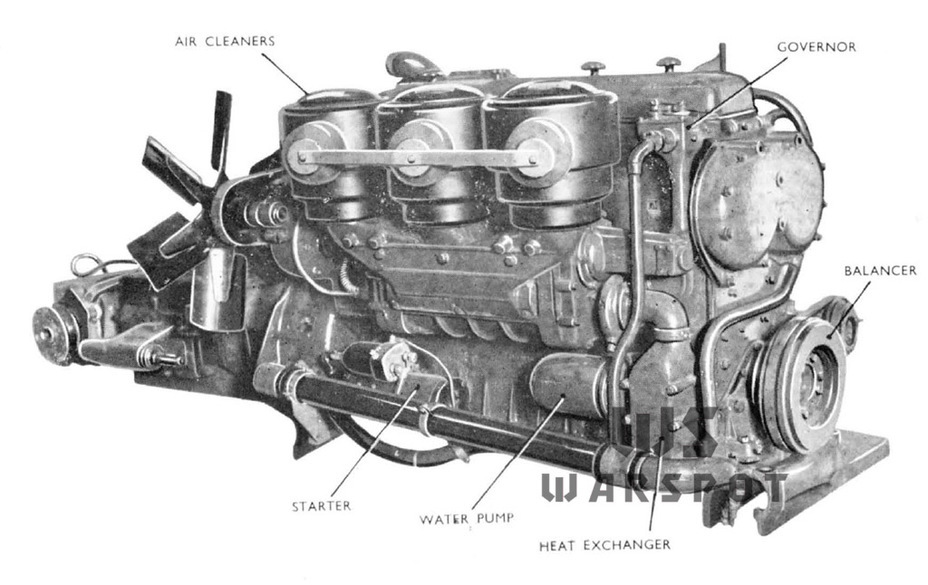
The War Ministry did not criticize the Vickers-Armstrongs design as much as the military. Trials of two prototypes with WD numbers S.279594 and S.279595 showed that the tank destroyer is suitable for reinforcement of infantry units. The SPG was accepted into service as the SP 17-PR Valentine I. Contract 294/SMR/7676 for 800 of these tank destroyers was signed in June of 1943. 60 vehicles were expected in the first quarter of 1944, 210 in the second, 240 in the third, and the remaining 290 in the fourth. Despite the criticism by the military twice as many of them were ordered than the Challenger.
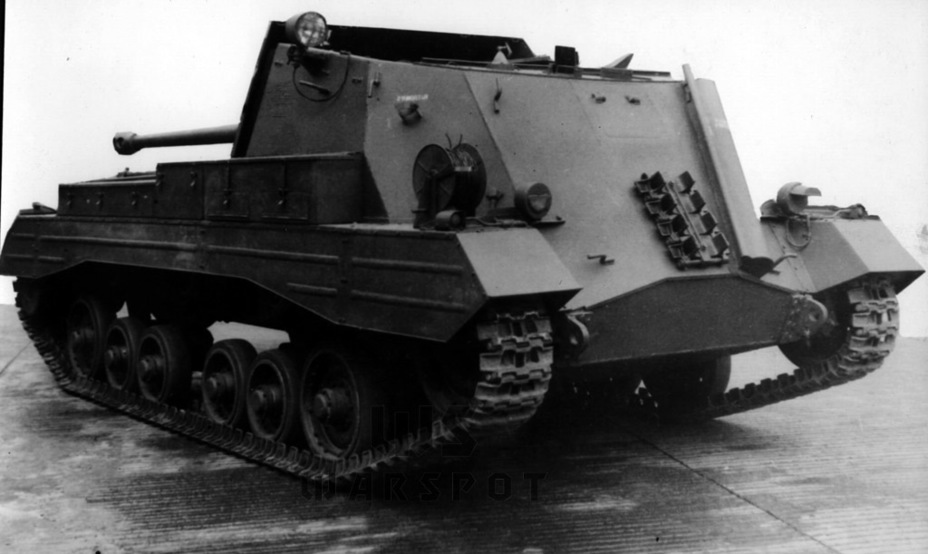
The start of production was delayed. A list of defects that needed to be corrected was composed after the trials. The V-shaped front (or rear, depending on how you look at it) of the hull made the driver's life much more difficult. The production variant had the front composed of four plates instead of three. The lower front plate had the same shape that it did on the regular Valentine. The top was now composed of three parts. A much simpler vision port cover replaced one that was composed of two parts. The driver also received a second periscope. The casemate, gun shield, and other elements were changed. The muzzle brake was returned to the gun. The mass of the production SP 17-PR Valentine I increased somewhat, but it did not impact mobility.
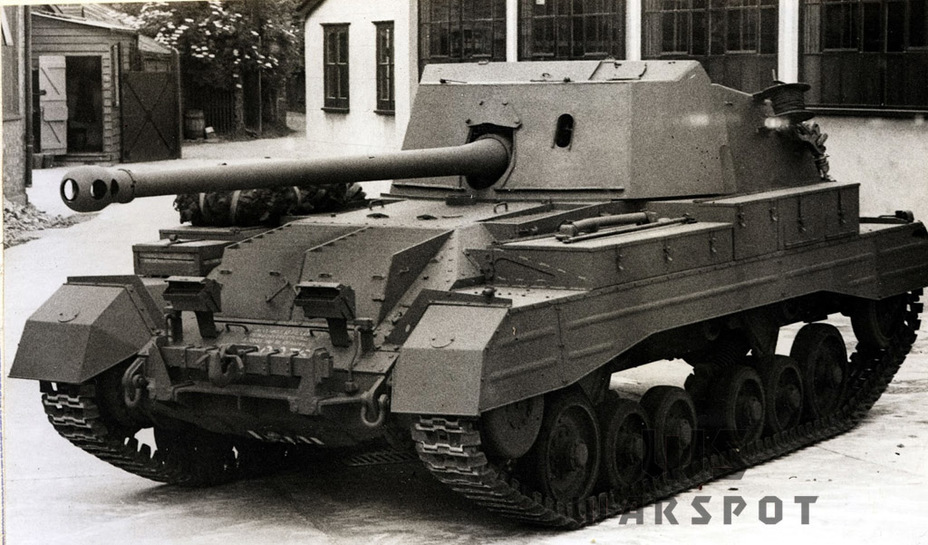
Like the Valentine, the SP 17-PR Valentine I was built at the Elswick Works in Newcastle. The first vehicles were delivered in May of 1944. Production never went past 65 vehicles per month, usually remaining at 40-50 units. This is not much, but the number needs to be examined in context. The aforementioned Challenger only saw 200 units produced. A number of them was given to Polish and Czech formations. Soon after that the SP 17-PR Valentine I became the most numerous all-British tank destroyer. Elswick Works passed the 200 unit mark in September of 1944.
Initially the plan was to build 800 vehicles with the serial numbers in the S.279596–S.280395 range. Fewer than that were actually built. In the summer of 1945 it became clear that WWII was coming to an end and there was no need to spend more money. The last SP 17-PR Valentine I produced was S.280260, the 665th vehicle.
Nevertheless, the tank destroyer that was nearly rejected by the artillery branch became the most numerous tank destroyer on a British chassis. Only the Achilles overtook it in numbers, but those were converted from American vehicles.
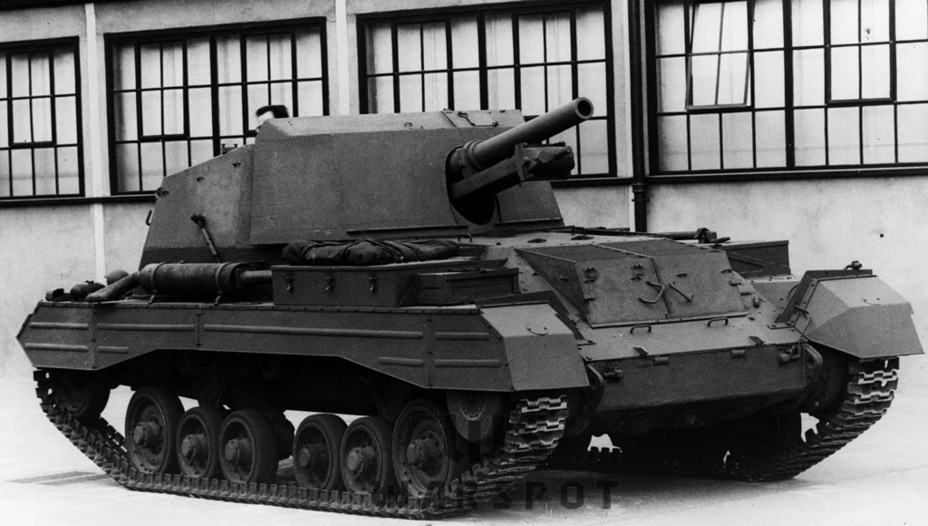
An SPG armed with the 25-pounder 88 mm gun was also built on this chassis. However, work did not progress past the prototype. It turned out that the chassis was ill-suited for the tasks that a 25-pounder carried out on the battlefield. Firing directly was rarely needed, but firing at a large angle of elevation was impossible. The «alternative Sexton» did not take off.
Another experiment was the installation of a roof. It was based on the experience in using the Wolverine (British variant of the GMC M10) where the crew was often hit from above. An SPG with the registration number S.279613 was converted. The roof added an extra half ton of weight. This modification also remained just an experiment.
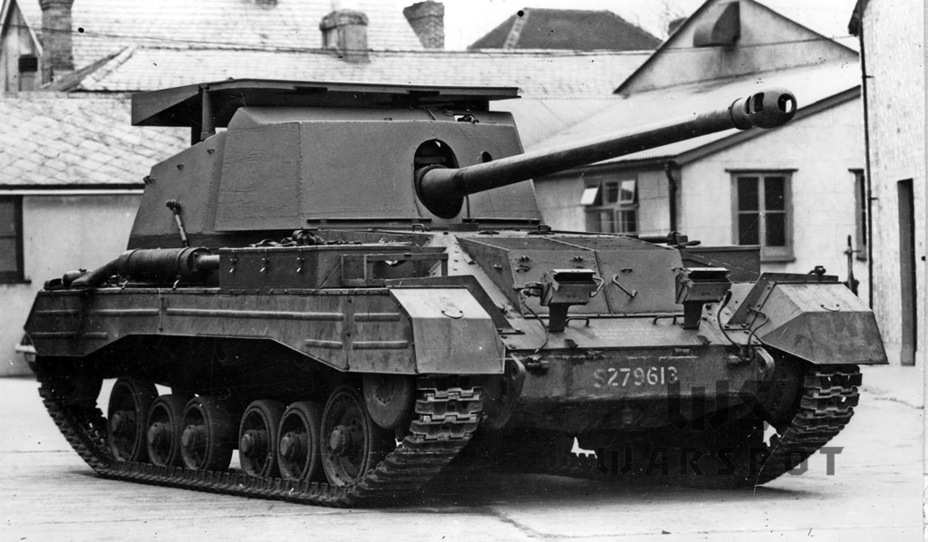
Period documents refer to this vehicle as the SP 17-PR Valentine I or SP 17-PR Valentine. This is what it is called in the user's manual, the latest of which was published in 1946. However, it was also known under a different name: Archer. It is not known when this title came about. It was most likely either towards the end of the war or after. The name is similar to other later names for British SPGs: Alecto and Avenger.
Slow but steady
The SP 17-PR Valentine I did not make it to Normandy. However, the Challenger did not make much of an appearance either. Most of the work was done by the Achilles IIC, but this variant remained the most common later as well. The SP 17-PR Valentine I was first issued in November 1944, when 13 vehicles were issued to the 21st Army.
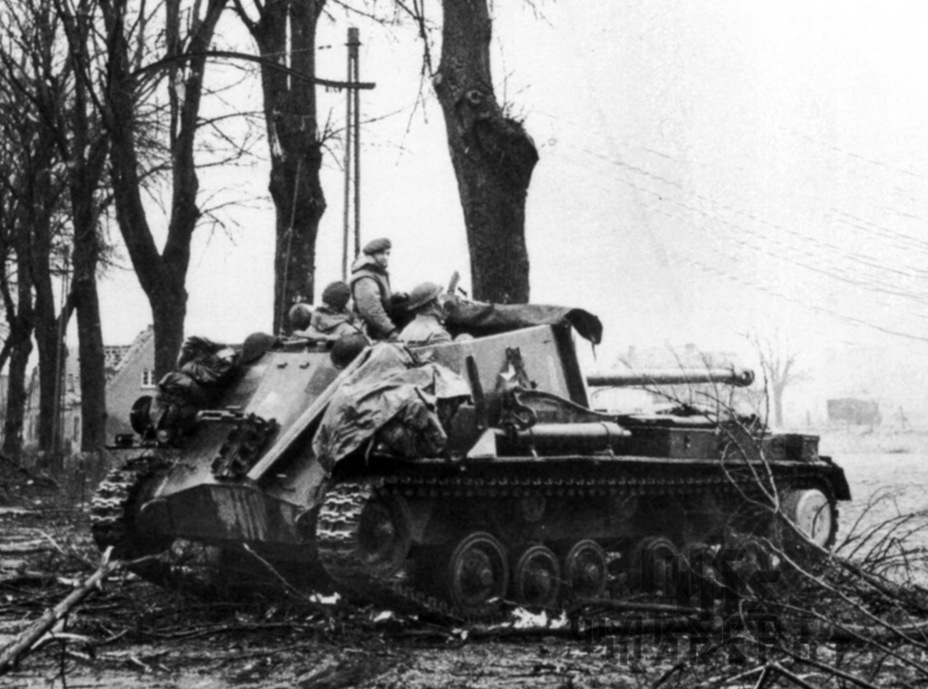
Unlike the Challenger, which was chiefly used by armoured formations, the SP 17-PR Valentine I was issued to infantry. They worked as reinforcements for units equipped with towed 17-pounder guns. These regiments had a battery of tank destroyers of three platoons of three vehicles. Each platoon had a commander's tank, either a Valentine X or Valentine XI. Another tank of the same type was given to the battery commander. Thanks to this organization Valentine tanks that fought only as bridgelayers by the summer of 1944 were back on the front lines as fully fledged tanks.
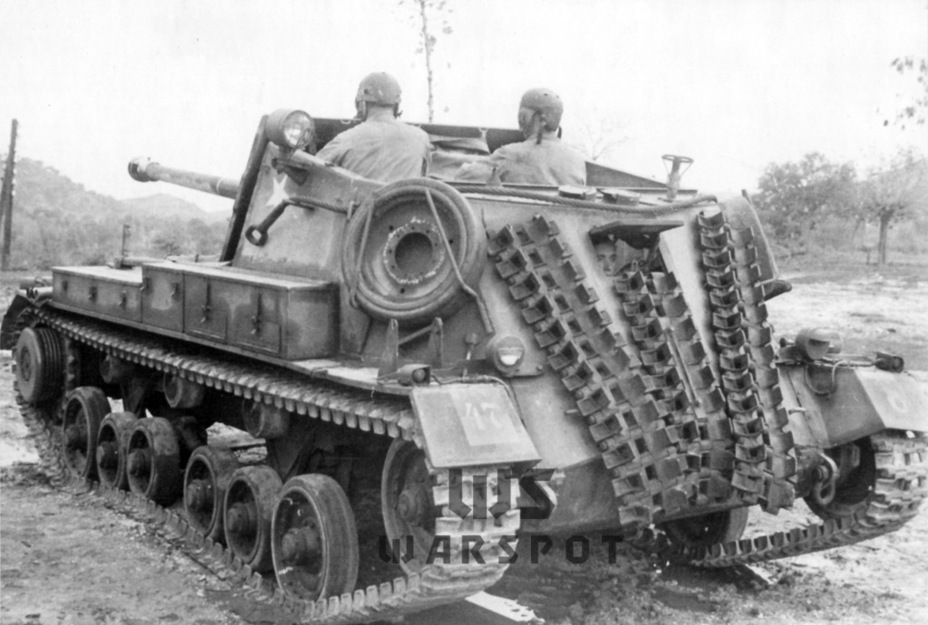
The Archer received a mixed reputation. The Valentine's slow chassis and cramped fighting compartment were definitely disliked. The limited traverse of the gun negatively impacted the mobility of fire.
On the other hand, the gun was more mobile than the towed variants. It is also worth comparing the British tank destroyer to its equals. Compared to the German Marder III, the British vehicle had slightly worse mobility and gun traverse, but carried more ammunition and had a more powerful gun. The crampedness was also relative, as the Archer was much roomier than the Marder. The British tank destroyer was much lower than the German one, which is a very important feature for a tank destroyer.
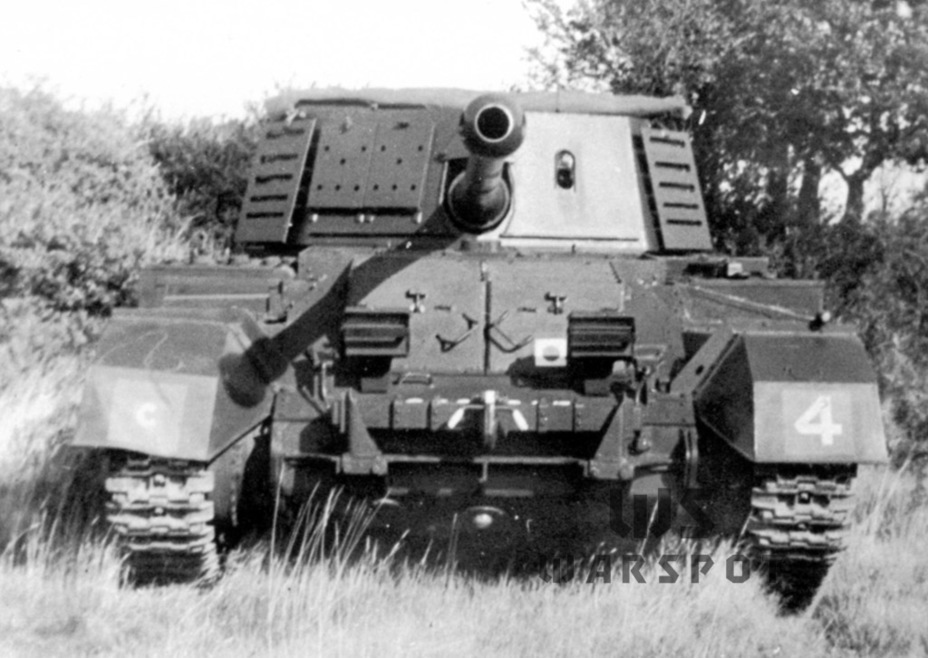
The Archer served an important role in the British army in WWII. They were not only used in Western Europe, but also in Italy. The Canadian 2nd Infantry Division also received this vehicle.
The Archer's fate after the war is also interesting. These vehicles remained in use by British units, including the Royal Armoured Corps, until the early 1950s. Looks like the mobility and combat effectiveness of these tank destroyers was satisfactory. The small and low tank destroyer with a backwards gun proved more in demand than the Challenger or Avenger.
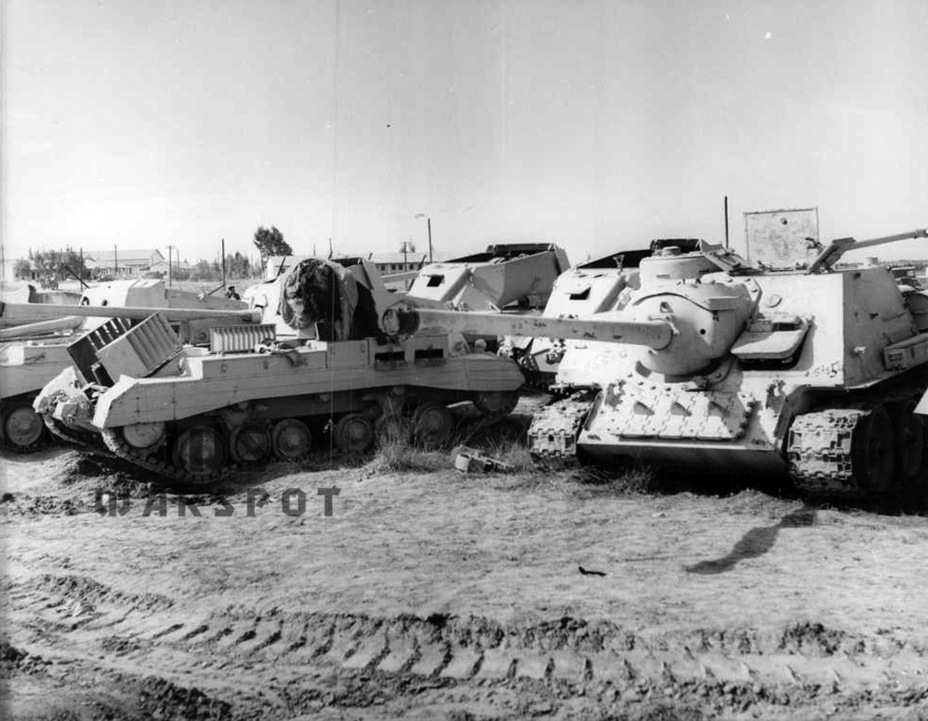
Egypt purchased 200 Archers after WWII. Some time after the British had to fight against their own vehicles. Israel, Great Britain, and France fought against Egypt for control of the Suez Canal in the fall of 1956. Archers took part in this conflict too, chiefly against Israeli units. It's hard to say that they performed poorly. Egyptian crews claimed some Israeli tanks and APCs. They worked well on the defense, but the situation changed when they had to attack. As a result the Egyptian army lost about a quarter of their Archers.
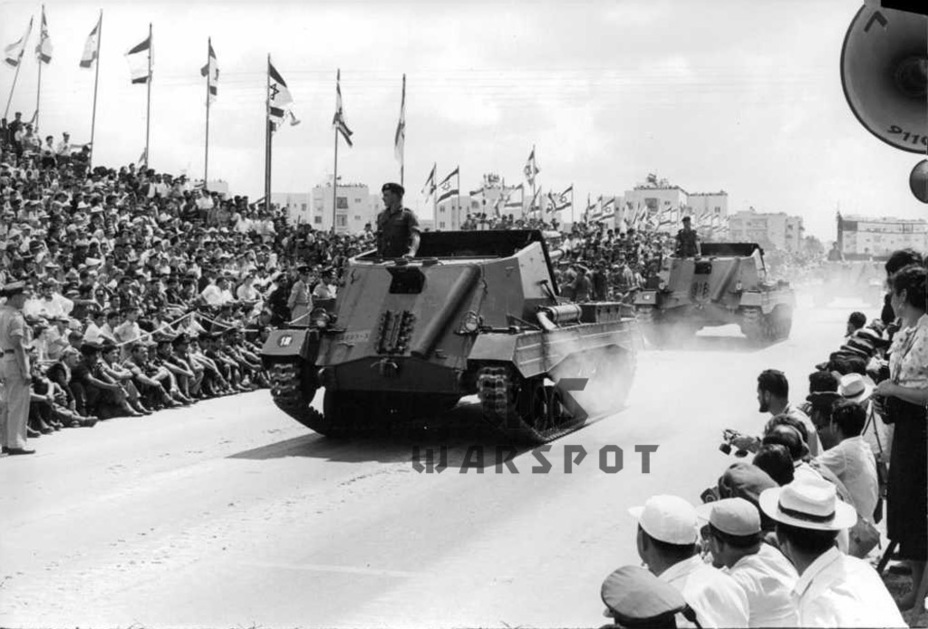
Let's finish with the fate of the Archer in Israel. The IDF captured about 40 such vehicles in Operation Musketeer. 36 were supposed to be taken into service, split into three companies. A number of them were converted to train drivers. However, it quickly turned out that these plans would not be carried out. The technical condition of the vehicles left much to be desired. The youngest one was already 10 years old. It's possible that poor technical condition was the cause of high losses taken by the Egyptians.
While the Israeli army tried to set up repairs and supply of spare parts, an event occurred that put an end to the Archer's career. 30 GMC M10s arrived in Israel, also used, but much easier to service. The total number of GMC M10s in the IDF grew to 51. A decision was made to not use the Archer.
In 1957 the vehicles took part in a parade as trophies. That was the end of their use in Israel. The guns from some of the Archers were installed into the M10s, giving an equivalent of an Archer IIC. The rest of the trophies were sent to warehouses. At least four of these vehicles survive to this day, two of which already left Israel and are now in private collections. 10 Archers survive in total, none of them running. One of these tank destroyers is on display in the Overloon museum in the Netherlands.
Translated by Peter Samsonov. Read more interesting tank articles on his blog Tank Archives.
Sources:
- British Infantry Tank Mk III Valentine, Part 2, Dick Taylor, Progress Publishing, 2010, ISBN 978–83–60672–15–0;
- Into the Vally: The Valentine Tank and Derivatives 1938–1960, Dick Taylor, MMP Books, 2012, ISBN 978–83–61421–36–8;
- NARA;
- Author's photo archive;
- https://bukvoed.livejournal.com;
- http://tankdevelopment.blogspot.com.






